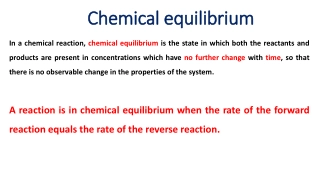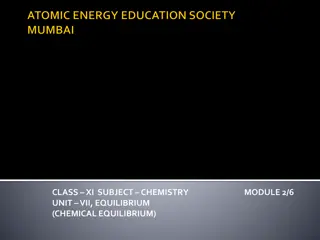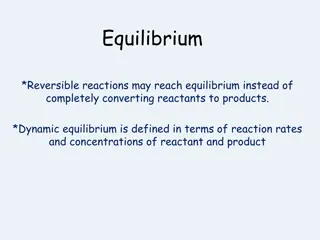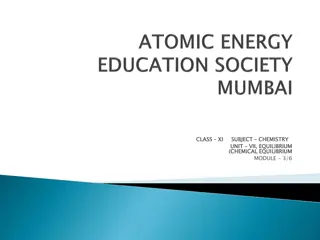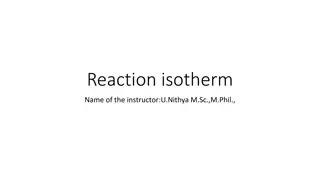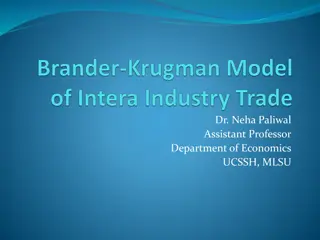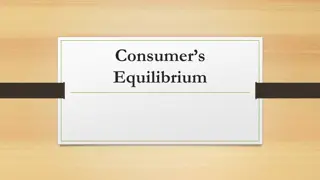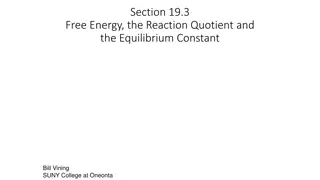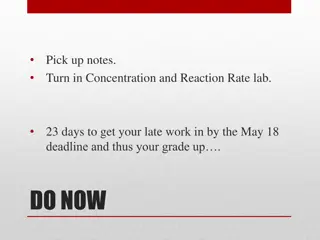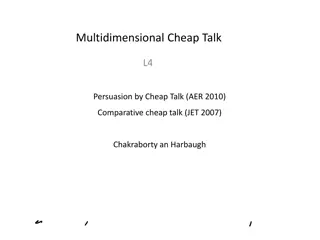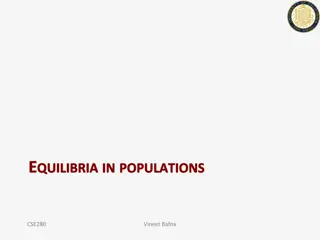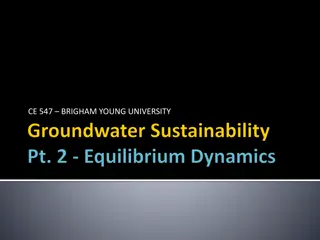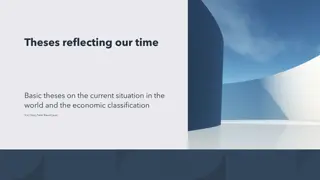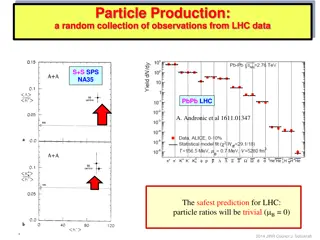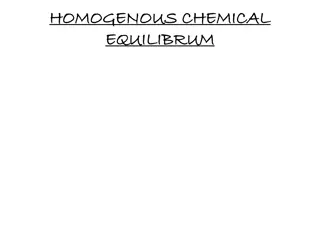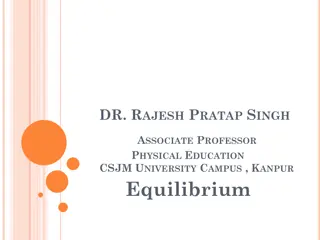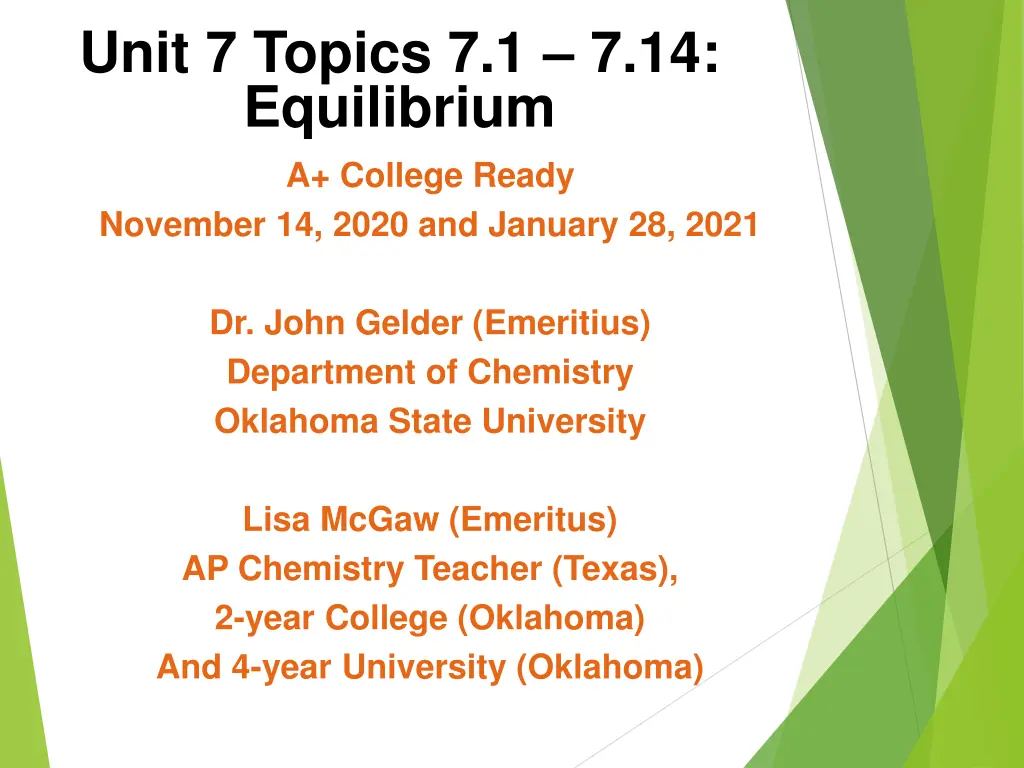
Chemical Equilibrium Topics and Resources for AP Chemistry Students
Explore various topics related to chemical equilibrium, including equilibrium constants, Le Chatelier's Principle, and practice questions from AP Chemistry exams. Access equations, constants, asynchronous work resources, and more for a comprehensive understanding of equilibrium in chemistry.
Download Presentation

Please find below an Image/Link to download the presentation.
The content on the website is provided AS IS for your information and personal use only. It may not be sold, licensed, or shared on other websites without obtaining consent from the author. If you encounter any issues during the download, it is possible that the publisher has removed the file from their server.
You are allowed to download the files provided on this website for personal or commercial use, subject to the condition that they are used lawfully. All files are the property of their respective owners.
The content on the website is provided AS IS for your information and personal use only. It may not be sold, licensed, or shared on other websites without obtaining consent from the author.
E N D
Presentation Transcript
Unit 7 Topics 7.1 7.14: Equilibrium A+ College Ready November 14, 2020 and January 28, 2021 Dr. John Gelder (Emeritius) Department of Chemistry Oklahoma State University Lisa McGaw (Emeritus) AP Chemistry Teacher (Texas), 2-year College (Oklahoma) And 4-year University (Oklahoma)
Equations and Constants College Board Equation Sheet
EQUATIONS NOT FOUND ON THE AP EQUATION SHEET Equilibrium Ksp = [A+] [B-] where AB(s) A+ (aq) + B-(aq)
Asynchronous WorkBCEs, DCIs and ACAs for Equilibrium BDA Teacher Web site: Equilibrium is Unit 10 http://genchem1.chem.okstate.edu/BDA/Topics.php BCE DCI ACA BCE: Intro to reversible Rxn. ACA: Reversible reactions Data (Java & video) BCE, ACA BCE49 DCI49 ACA55 BCE: Macroscopic reversible rxn ACA: using ICE tables to determine K BCE50 DCI50 ACA56 BCE: Using ICE tables to calculate []eq. ACA: ICE table practice BCE: ICE table practice. ACA: ICE table practice. BCE51 DCI51 ACA57 BCE52 DCI52 ACA58 BCE and ACA: Le Chatelier s Principle. Make video s BCE79 DCI78 ACA78
Thinking about an introduction to Chemical Equilibrium Lecture notes on equilibrium constants Practice calculating equilibrium constants Practice calculating concentrations of reactants and products at equilibrium Le Chatelier s Principle Comparing Q (nonequilibrium reaction quotient) to K.
2018 and 2019 AP Chemistry Exam Question 2 2019 AP Chemistry Exam Question 2 parts d, e and f Rubric Chief Reader Report 2018 AP Chemistry Exam Question 2 parts b and c Rubric Chief Reader Report
2019 AP Chemistry Exam Question 2 The compound BrCl can decompose into Br2 and Cl2, as represented by the balance chemical equation below. 2BrCl(g) Br2(g) + Cl2(g) H = 1.6 kJ/molrxn A 0.100 mol sample of pure BrCl(g)is placed in a previously evacuated, rigid 2.00 L container at 298 K. Eventually the system reaches equilibrium according to the equation above. (d) Calculate the pressure in the container before equilibrium is established. (e) Write the expression for the equilibrium constant, Keq, for the decomposition of BrCl. After the system has reached equilibrium, 42 percent of the original BrCl sample has decomposed. (f) Determine the value of Keq for the decomposition reaction of BrCl at 298 K.
Thinking about an equilibrium problems In the graph below the endothermic reaction BR(g) B(g) +R(g) is represented. Initially only BR(g) is present in the reaction vessel. The marks along the x-axis are in 1 minute increments. The initial [BR] (y-axis) is 2.0 M. The reaction begins about 1.5 minutes in this case. (a) At what point (indicate a letter) does the reaction attain equilibrium? (b) Indicate whether K for the reaction is greater than 1, less than 1 or equal to 1. Explain. (c) At point B indicate how Q compares to K. Explain.
Thinking about an equilibrium problems In the graph below the endothermic reaction BR(g) B(g) +R(g) is represented. Initially only BR(g) is present in the reaction vessel. The marks along the x-axis are in 1 minute increments. The initial [BR] (y-axis) is 2.0 M. The reaction begins about 1.5 minutes in this case. (d) In this new view the same reaction has occurred. Indicate the stress (at point E) that was imposed on the system, and explain how the system changed as a response to the stress.
Thinking about an equilibrium problems In the graph below the endothermic reaction BR(g) B(g) +R(g) is represented. Initially only BR(g) is present in the reaction vessel. The marks along the x-axis are in 1 minute increments. The initial [BR] (y-axis) is 2.0 M. The reaction begins about 1.5 minutes in this case. (e) In this new view the same reaction has occurred. Indicate the stress (at point E) that was imposed on the system, and explain how the system changed as a response to the stress.
QUESTIONS? Talk/chat to John Gelder or john.gelder@okstate.edu
Thinking about an introduction to Chemical Equilibrium Introducing reversible and irreversible reactions using a particulate level followed by a macroscopic approach approach. Inquiry Activity Particulate level (.jnlp file) Particulate level (video) Macroscopic level Getting students to invent Le Chatelier s Principle Guided Inquiry Activity Following a reversible reaction with chart recordings (.jnlp file) Following a reversible reaction with chart recordings (video) Inventing the Equilibrium Constant Guided Inquiry Activity Chart Recording (.jnlp file) Chart Recording (video files .not prepared yet) Lecture notes on equilibrium constants Practice calculating equilibrium constants Practice calculating concentrations of reactants and products at equilibrium

